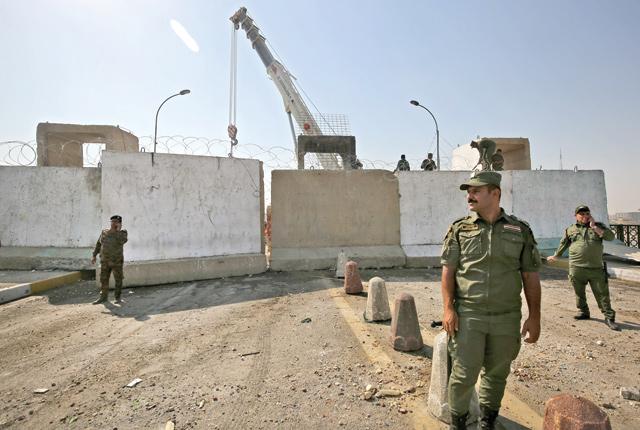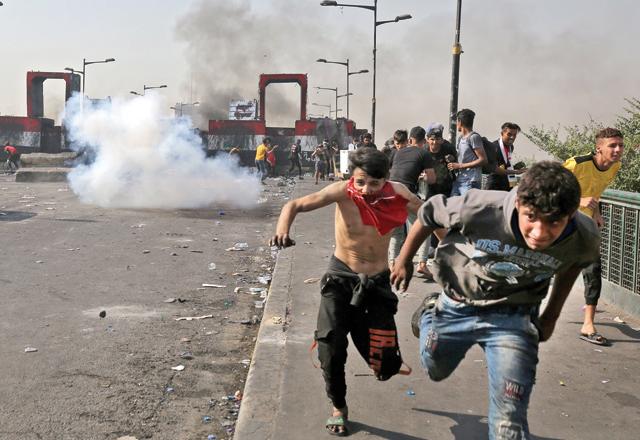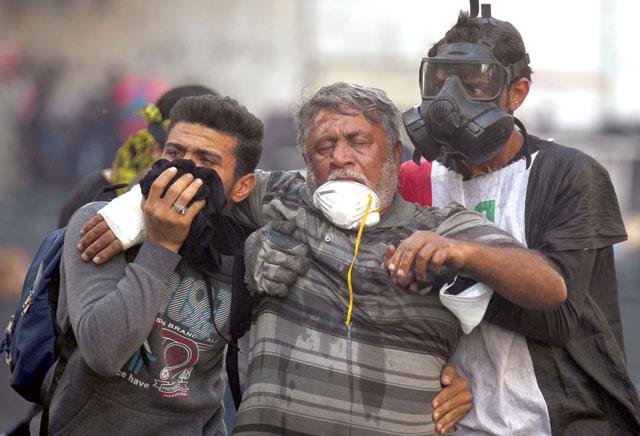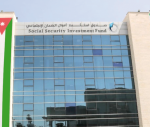You are here
Iraq reopens Green Zone bridge year after revolt
By AFP - Oct 27,2020 - Last updated at Oct 27,2020

Members of the Iraqi security forces remove concrete blocks on Baghdad's Sinek Bridge which was reopened on Tuesday after being closed last week to cut the road leading to the Iranian embassy on the first anniversary of the start of nationwide mass demonstrations against the authorities (AFP photo)
BAGHDAD — Iraqi authorities on Tuesday reopened a bridge in central Baghdad leading to the high-security Green Zone, in a sign of easing tensions a year after the launch of an anti-government protest movement.
The fragility of the return to normal, however, was underlined by the killing of a prominent activist in Amarah, 400 kilometres south of Baghdad.
Al Sinak Bridge was partially closed for security reasons after it turned into the site of fierce clashes between protesters and police in October 2019, when the nationwide revolt erupted.
Massive concrete barriers and metal fences were removed using cranes and workers swept up debris, as riot police looked on.
The bridge over the Tigris connects the Iranian embassy area and the fortified Green Zone — where government office, parliament and the US embassy are housed — to Tahrir Square, the epicentre of protests.
"We are now studying reopening Al Jumhuriyah bridge," Mohamed Al Bayati, a military advisor to Prime Minister Mustafa Kadhemi, told reporters.
Jumhuriyah, parallel to Sinak, leads directly to the Green Zone — a restricted zone for ordinary Iraqis.
On Sunday, police fired stun grenades and tear gas at protesters who were burning tyres and hurling rocks on Al Jumhuriyah bridge.
The bridge has been barricaded by towering concrete walls.
The Green Zone district was also the seat of power of Saddam Hussein.
After his fall in the 2003 US-led invasion, it turned into a symbol of disenfranchisement, corruption and official negligence in the oil-rich Arab country.
Protests demanding a total overhaul of the ruling class lost momentum then ground to a halt in the spring due to the coronavirus crisis and rising US-Iran tensions.
Around 600 people were killed and 30,000 wounded in clashes with security forces.
A campaign of targeted assassinations of leading figures of the October 2019 revolt followed, with the United Nations pinning responsibility on militias.
On Monday, activist Amjad Al Lami, 31, was shot three times in the head and chest near his home, police and medical sources told AFP.
Demonstrations were revived in Baghdad and southern cities on the movement's October 25 first anniversary but have since dispersed, with few protest tents left behind.
Related Articles
BAGHDAD — Dozens of Iraqi protesters again clashed with security forces in Baghdad Monday, a day after a rally marked the first anniversary
BAGHDAD — Tents dismantled, photos of "martyrs" removed and demonstrators sent home — in Baghdad's Tahrir Square, life returned to normal on
BAGHDAD — Anti-government demonstrators spread to a second bridge in the Iraqi capital Saturday after security forces retreated from a key a


















